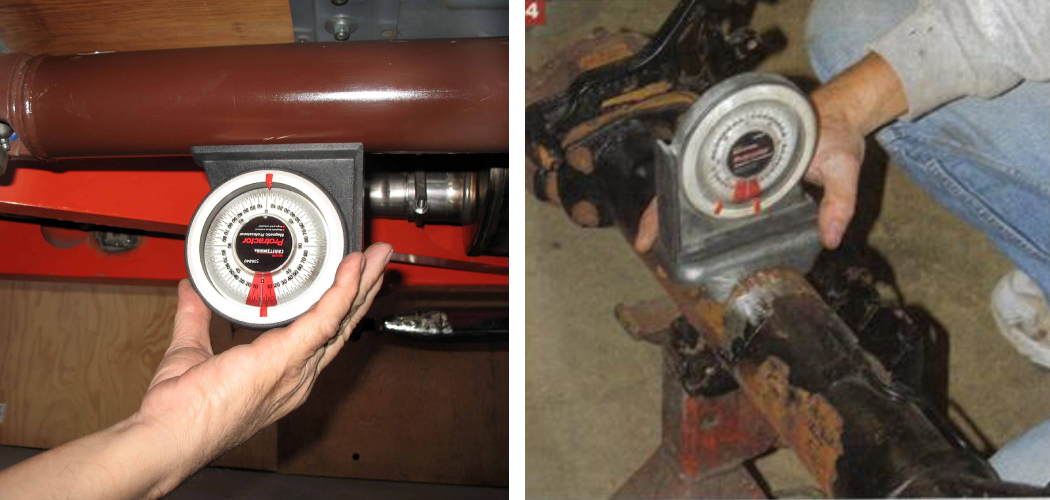Experiencing vibrations in a vehicle’s driveshaft can be a disconcerting and frustrating issue for any driver. These disturbances not only compromise the overall driving experience but may also indicate underlying mechanical problems that, if left unaddressed, could lead to more severe damage. The driveshaft, a crucial component in the power transmission system, plays a pivotal role in maintaining smooth and efficient vehicle operation.
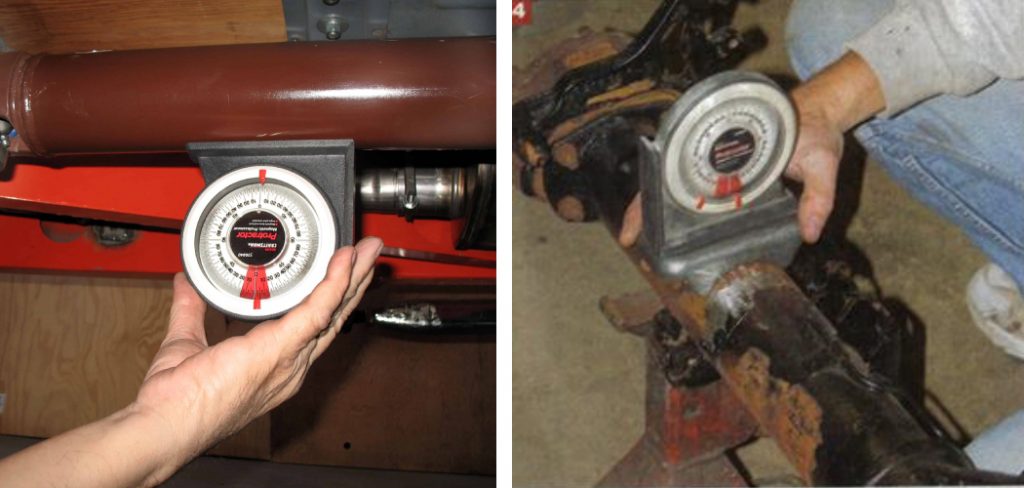
When vibrations occur, pinpointing the root cause becomes paramount. In this article, we delve into how to fix driveshaft vibration, exploring common culprits such as misalignment, unbalanced components, and worn-out universal joints.
Armed with practical insights and step-by-step guidance, drivers and enthusiasts alike can embark on a journey to restore the balance and harmony of their vehicle’s driveshaft, ensuring a smoother and safer ride on the road ahead.
The Importance of Driveshaft Functionality
The seamless functionality of the driveshaft is fundamental to a vehicle’s operational integrity. As the primary conduit for transferring power from the engine to the wheels, it determines the efficacy of the vehicle’s propulsion system. Any impairment in the driveshaft can result in inefficient power transfer, decreased fuel economy, and a heightened risk of vehicular failure.
Therefore, ensuring the driveshaft is in pristine condition is not only a matter of performance but also of safety, making it imperative for vehicle owners to regularly inspect and maintain this critical component.
Diagnosing Driveshaft Vibrations
Recognizing the significance of a fully operational driveshaft is only the first step—accurately diagnosing the source of vibrations is equally essential. A thorough diagnosis prevents further damage to the vehicle and can save owners from expensive repairs down the line.
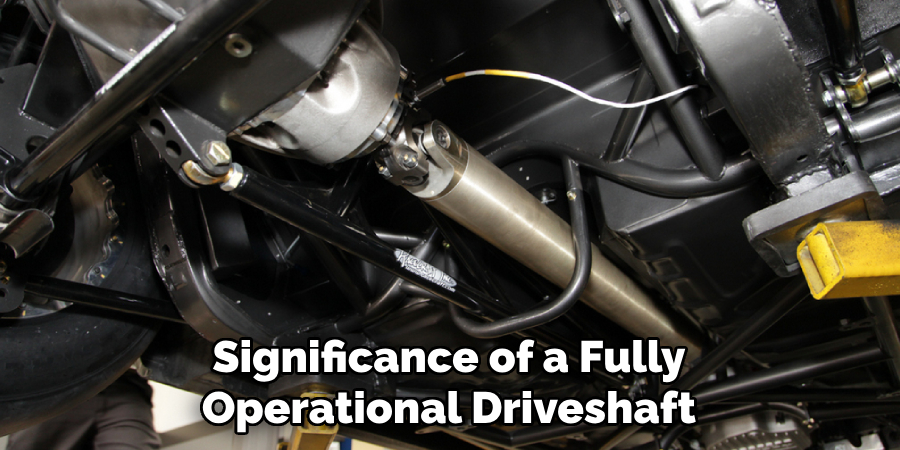
Vibrations stemming from the driveshaft may manifest as a shudder during acceleration or a constant drone that resonates throughout the vehicle’s frame. It’s critical to address these signs promptly, as they are often precursors to more significant mechanical failures.
To correctly identify the issues causing driveshaft vibrations, a systematic approach involving inspection of the universal joints, checking for shaft balance, and looking for any signs of wear or damage is required. By meticulously resolving these vibrations, not only do we enhance the drivability of the vehicle, but we also extend the lifespan of its components.
Understanding Driveshaft Vibration
Driveshaft vibration is a phenomenon that can be attributed to a variety of causes, each with its own set of implications for the vehicle’s performance. At its core, vibration arises from the driveshaft operating outside its normal rotational parameters, which are finely tuned to the specific dynamics of the vehicle.
Common factors contributing to this disruption include imbalance in the driveshaft, which can arise from manufacturing defects, damage, or loss of weights that maintain shaft equilibrium. Misalignment is another prevalent cause, potentially resulting from worn out mounting bushings, bearings, or accidents impacting the drive train’s geometry.
Additionally, worn or damaged universal joints or CV joints can create irregular motion and resonances, further exacerbating vibration issues. Understanding each of these factors and their symptomology is key for vehicle owners and mechanics to diagnose and address driveshaft vibration effectively.
Causes of Driveshaft Vibration
Identifying the precise cause of driveshaft vibration is crucial for applying the correct solution. Among the most common culprits are:

- Imbalance: One of the primary causes of driveshaft vibration is an imbalance in the driveshaft itself. This can be due to a manufacturing error, a loss or shifting of balance weights, or damage incurred from road debris. An imbalanced driveshaft rotates unevenly, causing vibrations that can be felt at certain speeds or continuously while driving.
- Worn Universal or CV Joints: Universal joints (U-joints) and constant velocity (CV) joints allow the driveshaft to transmit power at varying angles. When these joints wear out or fail, they can cause the driveshaft to wobble and vibrate. Symptoms can include clunking noises, difficulty turning, or vibrations that worsen with changes in speed.
- Misalignment: Proper alignment is critical for the driveshaft to function smoothly. When components like engine and transmission mounts, bearings, or the driveshaft itself are out of position, it can cause the system to vibrate. Misalignment can result from normal wear and tear, poor installation, or as a result of an impact or collision.
- Damaged Driveshaft Components: Damage to the driveshaft tube, yokes, flanges, or other components can lead to vibration. This damage may stem from a collision, aggressive driving, overloading the vehicle, or simple wear over time.
- Insufficient Lubrication: Inadequate lubrication of the U-joints or CV joints can cause premature wear and subsequent vibration due to increased friction and heat.
Each of these causes can have distinct symptoms and may appear under different driving conditions, making a thorough inspection and diagnosis vital for a proper repair.
Symptoms and Effects of Driveshaft Vibration
The repercussions of driveshaft vibration can range from minor annoyances to major mechanical malfunctions. Drivers may initially notice subtle symptoms, such as a faint humming or buzzing noise, which can evolve into more palpable sensations like vibrations in the floorboard or through the vehicle’s seat at certain speeds.
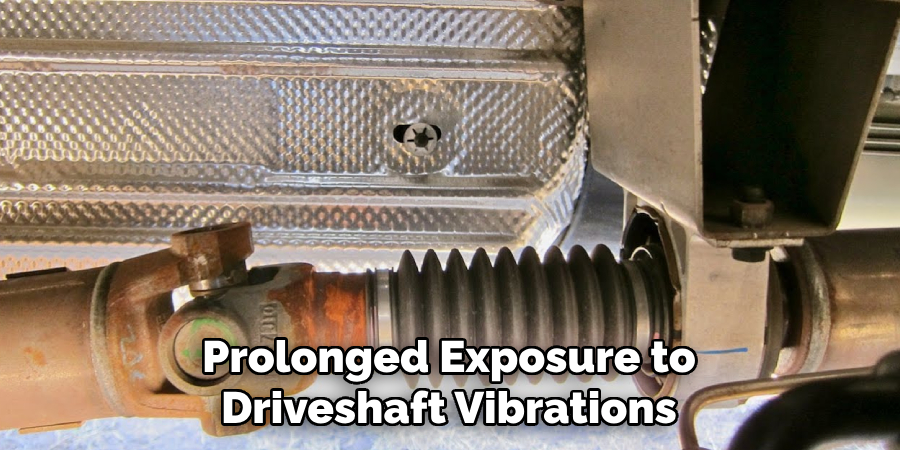
As the condition progresses, these vibrations can become alarmingly pronounced, especially under acceleration or load, indicating a more serious issue. The effects of prolonged exposure to driveshaft vibrations are consequential, leading to excessive wear on tires, bearings, and other drive train components, and in extreme cases, cause driveline failure.
This not only impacts the driving comfort but can also incur significant repair costs. It is, therefore, critical for these symptoms to be observed, diagnosed, and rectified as swiftly as possible to maintain the vehicle’s safety, performance, and longevity.
Recognizing the Common Signs of Driveshaft Vibration
While diagnosing driveshaft issues requires a comprehensive approach, there are a few common signs that operators and technicians should be vigilant of. These signs include:
- Vibrations Felt Throughout the Vehicle: One of the most noticeable symptoms is a general vibration that can be felt while driving, typically increasing with the vehicle’s speed.
- Unusual Noises: Clicking, clunking, or squeaking sounds from underneath the vehicle often emerge when U-joints or CV joints are failing and may signify the onset of driveshaft vibration.
- Difficulty in Handling: A compromised driveshaft can result in handling difficulties, making the vehicle feel unstable or unresponsive, particularly when accelerating or making turns.
- Visible Wear or Damage: Upon visual inspection, any signs of rust, cracks, or wear on the driveshaft or associated components can suggest potential vibration issues.
- Shuddering During Acceleration: A shuddering sensation when accelerating from a stop or low speed can be a clear indicator of a malfunctioning driveshaft.
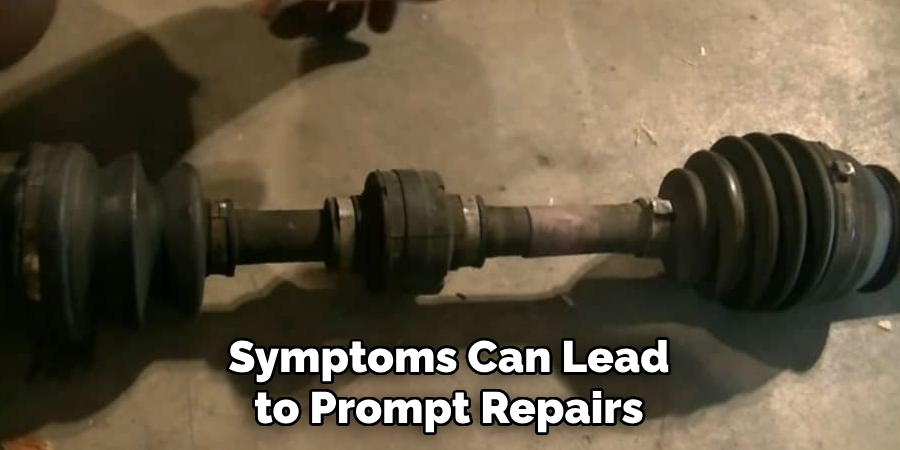
Early recognition of these symptoms can lead to prompt repairs, ultimately saving vehicle owners from more severe and costly damages. Mechanics should prioritize these signs during routine checks to ensure the driveshaft remains in optimal working condition.
10 Methods How to Fix Driveshaft Vibration
1. Visual Inspection:
Start by visually inspecting the driveshaft for any visible signs of damage, such as dents, bends, or missing balance weights. Check for loose or damaged U-joints, as they are often a common source of vibrations. Inspect the driveshaft’s alignment and ensure that it rotates smoothly without any wobbling.
Additionally, check for any signs of wear or damage on the driveshaft’s CV joints. While inspecting the driveshaft, also make sure that all connecting hardware, such as bolts and brackets, are secure and in good condition.
2. Check for Imbalance:
Driveshaft imbalance is a leading cause of vibrations. Use a dynamic balancing machine to identify any imbalances in the driveshaft. If imbalances are detected, strategically add or remove weights to achieve a balanced rotation. This process helps eliminate vibrations caused by uneven weight distribution.
Dynamic balancing is an essential step in maintaining the smooth operation of a vehicle. It involves using specialized equipment to identify and correct any imbalances that may be present in the driveshaft. The process is crucial because even small imbalances can lead to significant vibrations, which can affect the performance and safety of the vehicle.
During dynamic balancing, the driveshaft is rotated at high speeds while sensors measure the vibrations. Any areas of imbalance are then identified, and weights are added or removed to achieve a balanced rotation. This process is repeated until the driveshaft is perfectly balanced.
3. U-Joint Inspection and Replacement:
Examine the universal joints (U-joints) for signs of wear or play. Worn-out U-joints can cause vibrations and compromise the overall integrity of the driveshaft. If any issues are identified, replace the affected U-joints promptly. Ensure that the replacement U-joints are of high quality and properly lubricated. It is also recommended to replace all U-joints at once to prevent uneven wear and avoid future problems.
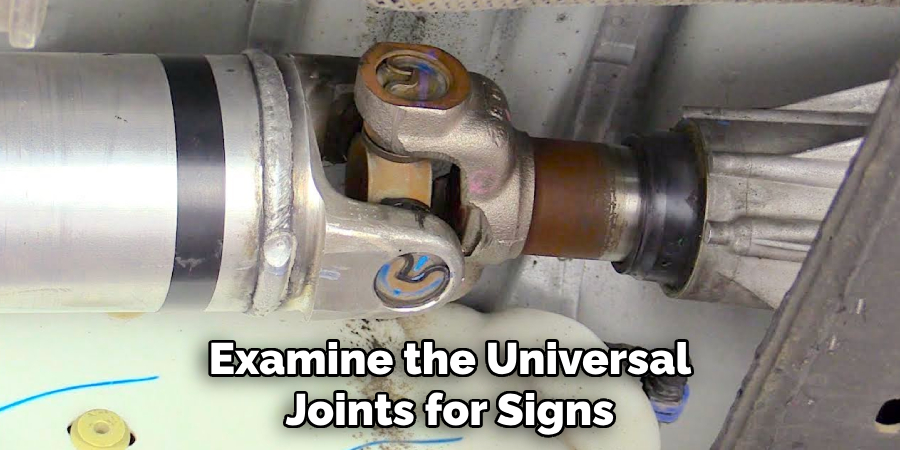
A U-joint, also known as a universal joint, is an essential component of a vehicle’s drivetrain. Its main function is to transmit torque from the transmission to the driveshaft and allow for the flexibility of movement between these two components.
Over time, constant use and exposure to harsh driving conditions can cause wear and tear on the U-joints, leading to potential problems such as vibrations or even complete failure.
4. Align the Driveshaft:
Misalignment of the driveshaft can lead to vibrations. Use precision measuring tools to check the alignment of the driveshaft with other drivetrain components. If misalignment is detected, adjust the driveshaft’s positioning to ensure it aligns correctly with the transmission and differential.
This will help reduce vibrations and improve overall performance. Though many modern vehicles have self-aligning driveshafts, it’s always a good idea to check for misalignment as part of regular maintenance.
In addition to checking for misalignment during routine maintenance, it’s important to address any symptoms of vibration or noise immediately. Delaying repairs can lead to further damage and more expensive repairs down the road.
5. Verify Transmission and Differential Alignment:
In addition to aligning the driveshaft, it is crucial to verify the alignment of the transmission and differential. Misalignment between these components can contribute to driveshaft vibrations. Adjust the positioning of the transmission and differential as needed to achieve proper alignment.
It is also important to check for any worn or damaged components within the transmission and differential, such as worn bearings or gears. These can also cause vibrations and should be repaired or replaced if necessary.
Regular maintenance of the transmission and differential, such as fluid changes and inspections, can help prevent alignment issues. It is recommended to follow the manufacturer’s guidelines for maintenance intervals and techniques.
6. Check for Runout:
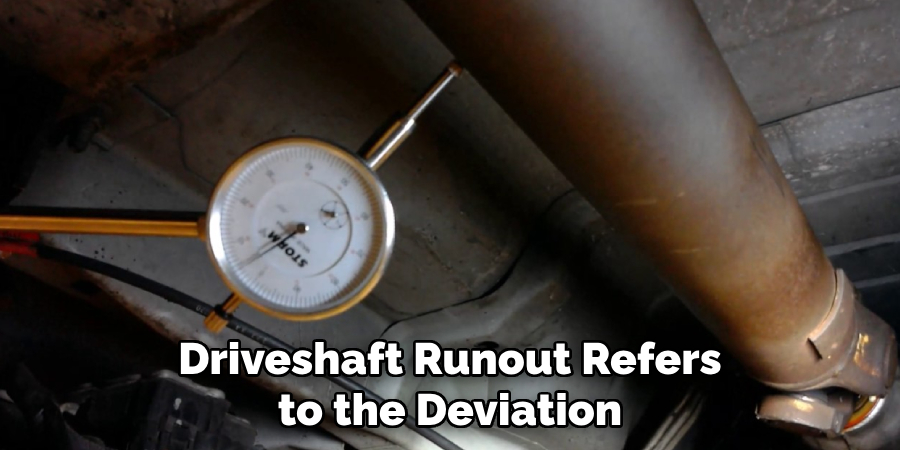
Driveshaft runout refers to the deviation from a true rotational axis. Excessive runout can result in vibrations. Use dial indicators to measure runout at various points along the length of the driveshaft. If runout exceeds acceptable limits, consider having the driveshaft professionally straightened or replaced.
Runout can also be caused by worn or damaged universal joints. Make sure to inspect the universal joints for any signs of wear or damage, such as rust, looseness, or cracks. If any issues are found, replace the universal joint before checking for runout again.
Another factor that can contribute to runout is improper installation of the driveshaft. When installing a driveshaft, make sure that it is properly aligned and torqued to specifications. An improperly installed driveshaft can cause excessive runout and potential damage.
7. Inspect Center Support Bearing:
Driveshafts with a center support bearing may experience vibrations if the bearing is worn or damaged. Inspect the center support bearing for signs of wear, such as excessive play or noise. Replace the center support bearing if necessary, ensuring that the new component is properly aligned and securely mounted.
A faulty center support bearing can cause further damage to the driveshaft and other components if left unchecked. While inspecting the center support bearing, also check the driveshaft for any signs of damage, including dents or cracks. If any issues are found, it is important to address them promptly to prevent further damage and ensure safe operation of the vehicle.
In addition to regular inspections, it is also important to properly maintain the center support bearing and driveshaft. This includes ensuring that all bolts and connections are properly tightened, and lubricating the bearing as recommended by the manufacturer.
It is also important to keep an eye out for any unusual noises or vibrations while driving, as these could be indicators of a problem with the center support bearing or driveshaft.
8. Balance the Wheels and Tires:
Imbalances in the wheels and tires can contribute to driveshaft vibrations. Ensure that all wheels are properly balanced and that tires have even wear. Rotate and balance the tires regularly to prevent uneven tread wear that can lead to vibrations. Additionally, check for any bent or damaged wheels that may also cause imbalances.

When it comes to balance the wheels and tires of your vehicle, there are a few key factors to keep in mind. First and foremost, it’s important to regularly rotate and balance your tires. This helps prevent uneven tread wear, which can contribute to vibrations in the driveshaft.
9. Address Axle and Suspension Issues:
Issues with the vehicle’s axles or suspension can impact driveshaft performance. Inspect the axles for damage or misalignment and address any issues accordingly. Check the suspension components for wear, including bushings and shocks, and replace or repair as needed to maintain proper alignment and reduce vibrations.
Additionally, make sure that the driveshaft is properly aligned with the rest of the drivetrain, as misalignment can cause excessive wear and damage to all components involved.
Other maintenance tasks that can help prevent axle and suspension issues include regularly rotating tires to promote even tire wear and maintaining proper tire pressure. This helps distribute weight evenly across the vehicle and reduces strain on the axles and suspension.
10. Professional Driveshaft Services:
If all else fails or if the diagnosis requires specialized equipment, consider seeking professional driveshaft services. Specialized shops can conduct in-depth analyses, perform precision balancing, and provide expert solutions to resolve complex driveshaft vibration issues. These shops typically have all the necessary tools and equipment to repair and balance driveshafts, as well as experienced technicians who can diagnose and fix any problems.
In addition to providing repairs, professional driveshaft services can also offer custom solutions for unique vehicles or specific performance needs. They may be able to fabricate a completely new driveshaft or modify an existing one to better suit the vehicle’s needs. This can be especially useful for vehicles used in off-road or high-performance settings.
Conclusion
In conclusion, addressing driveshaft vibration is crucial for maintaining vehicle performance, safety, and comfort. By understanding the causes and symptoms of driveshaft vibration and following systematic diagnostic procedures, individuals can effectively identify the underlying issues. Whether it’s balancing the driveshaft, replacing worn U-joints, or correcting misalignment, timely intervention can prevent further damage and ensure smooth operation.
Furthermore, implementing preventive measures such as regular inspection and maintenance can help detect potential problems early on and mitigate the risk of driveshaft vibration occurring in the first place. Ultimately, a properly functioning driveshaft enhances overall drivability and extends the lifespan of the vehicle’s drivetrain components.
Hopefully, this article gave you some helpful tips about how to fix driveshaft vibration successfully, so now that you have the proper knowledge on how to get the job done, why not give it a try today?

